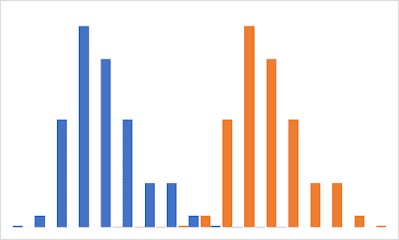Kruskal-Wallis Test - Comparing multiple non-parametric data sets

Previously I showed one-way ANOVA for comparing samples means. It assumes the samples are normally distributed. For non-parametric samples, we have Kruskal-Wallis test. Kruskal-Wallis the alternative to one-way ANOVA when your samples do not follow the normal distribution. Distribution 2 samples > 2 samples Normal Two Sample Mean Test ANOVA Non-parametric Mann-Whitney Kruskal-Wallis How does Kruskal-Wallis test work? Kruskal-Wallis test is used to test if there is any statistically significant differences between the medians of three or more independent (unrelated) groups. It is similar to Mann-Whitney test in that it sorts the data altogether, ranks them and then calculates the test statistics. But where Mann-Whitney uses NORM.S.DIST to calculate the test statistics, Kruskal-Wallis uses CHISQ.DIST instead. Implementing Kruskal Wallis in LAMBDA Step 1 : Group data together We can group the data togeth...
